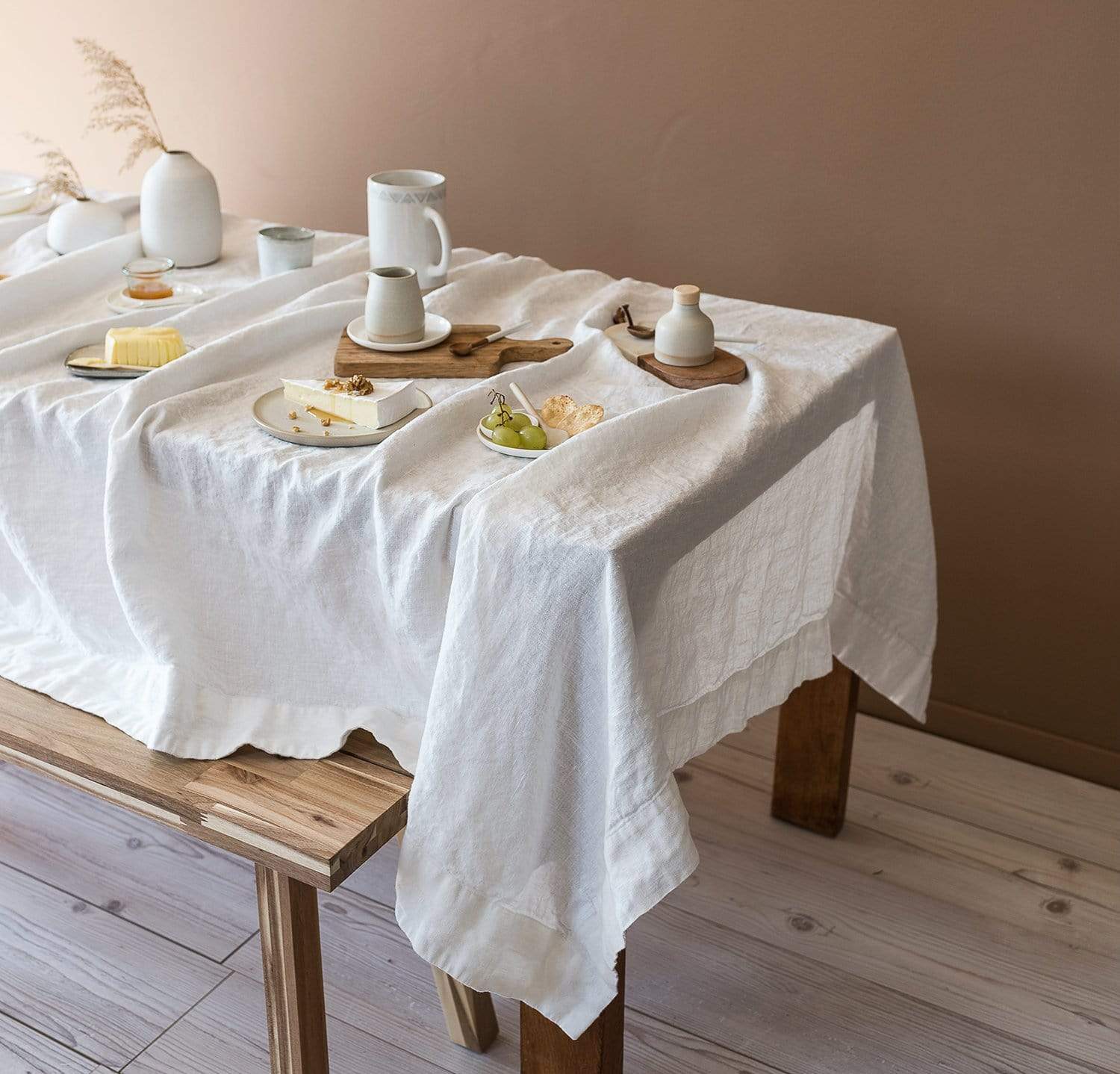Do It Yourself Table Runner Projects: Customized Layouts for Your Home
Do It Yourself Table Runner Projects: Customized Layouts for Your Home
Blog Article
Bed Linen Material Advancements: Discovering Modern Trends and Creative Applications in Design and Fabric Industry
From sustainable manufacturing methods to innovative weaving innovations, the development of linen is improving the landscape of the textile industry. As we dive into the realms of innovative style applications and the introduction of linen blends and hybrid fabrics, a new phase unravels in which linen's role in future fabric technologies takes facility stage.
Sustainable Practices in Linen Production
Sustainable methods in linen production have come to be progressively vital in the fabric industry's efforts to minimize environmental effect and advertise ethical sourcing approaches. Bed linen, a natural fiber stemmed from the flax plant, offers a series of advantages such as toughness, breathability, and biodegradability. However, conventional techniques of bed linen production can involve substantial water intake, pesticide usage, and energy-intensive procedures.
To address these difficulties, numerous fabric producers are adopting lasting techniques throughout the bed linen production process. This consists of sourcing flax from organic farms that prevent dangerous chemicals and chemicals, implementing water-efficient retting methods to essence fibers from the flax stalks, and utilizing eco-friendly dyes and surfaces. Furthermore, some firms are buying sustainable power sources to power their manufacturing facilities and decreasing waste via recycling and upcycling campaigns.
Technical Developments in Bed Linen Weaving
With the growing focus on sustainable methods in linen production, the textile industry is now observing a rise in technical innovations especially intended at reinventing the art of linen weaving. These technologies are reshaping the means linen fabrics are created, providing raised effectiveness, quality, and creative thinking in weaving techniques.
Among the vital technological improvements in bed linen weaving is the assimilation of digital looms. These sophisticated looms are outfitted with software application that enables complex and elaborate layouts to be woven with precision. By digitizing the weaving process, manufacturers can accomplish greater uniformity and precision in their bed linen materials.
Additionally, developments in yarn spinning technology have enabled the manufacturing of finer and more resilient bed linen threads - table cloths. This leads to softer and smoother bed linen fabrics that keep their top quality also after numerous usages and cleans
In addition, the advancement of green dyeing processes and finishes for linen fabrics is obtaining traction. These lasting practices not only lower the environmental influence however likewise satisfy the boosting customer need for morally created textiles.
Creative Style Applications for Bed Linen
Ingenious artistic approaches are increasingly forming the imaginative design applications for bed linen in the fabric market. Linen's natural aesthetic allure and capacity to mix with various other textiles make it a preferred option for producing one-of-a-kind garments and accessories that provide to the ecologically mindful consumer.
Additionally, designers are trying out bed linen in home decor, utilizing its sturdy and breathable nature to craft fashionable furnishings such as curtains, bed linens, and furniture. The appearance and drape of linen bring a sense of elegance and comfort to indoor areas, adding a touch of sophistication to modern homes.

Bed Linen Blends and Hybrid Fabrics

Hybrid fabrics, on the other hand, take the concept of mixing an action additionally by integrating added aspects such as metallic threads, recycled products, or conductive fibers. These cutting-edge fabrics not just why not find out more broaden the style possibilities but likewise introduce functional facets like conductivity, antimicrobial residential properties, or improved toughness. Crossbreed fabrics are significantly being made use of in various industries, consisting of fashion, interior style, and technical textiles, where the demand for multifunctional materials is on the surge.
Bed linen's Duty in Future Textile Innovations

In the world of future textile developments, bed linen is anticipated to be an essential player in the growth of innovative practical textiles. Researchers and developers are discovering ways to enhance bed linen's inherent qualities through technical innovations, such as including clever fabrics, nanotechnology, and performance finishes. article These developments intend to raise bed linen's performance features, making it ideal for a broader variety of applications, from activewear to protective garments.
Furthermore, the mix of bed linen with other all-natural or artificial fibers opens limitless possibilities for producing novel textiles with one-of-a-kind buildings and performances. By leveraging linen's characteristics and checking out cutting-edge blends, the fabric market is positioned to present interesting advancements that deal with evolving customer needs and sustainability demands.
Verdict
To conclude, the exploration of sustainable practices, technical advancements, imaginative design applications, bed linen blends, and its function in future fabric advancements highlight the constant evolution of bed linen textile in the modern design and textile industry. With a concentrate on technology and creativity, the convenience and environment-friendly nature of bed linen make it a useful product for developers and producers alike, paving the means for additional developments and innovations in the field of fabrics.
As we dive right into the worlds of imaginative layout applications and the appearance of bed linen blends and hybrid materials, a brand-new phase unravels in which bed linen's function in future fabric technologies takes facility stage.
Discovering the combination of bed linen with various other textiles has led to the appearance of ingenious blends and crossbreed textiles in the contemporary textile industry. Bed linen blends supply an unique mix of the attributes of linen with those of various other fibers, resulting in materials that have enhanced residential properties such as raised durability, improved draping, hop over to here and lowered wrinkling.The advancement of linen blends and crossbreed textiles has actually established the stage for Bed linen to play a critical duty in driving future fabric developments.In the realm of future textile innovations, linen is anticipated to be an essential gamer in the development of sophisticated functional materials.
Report this page